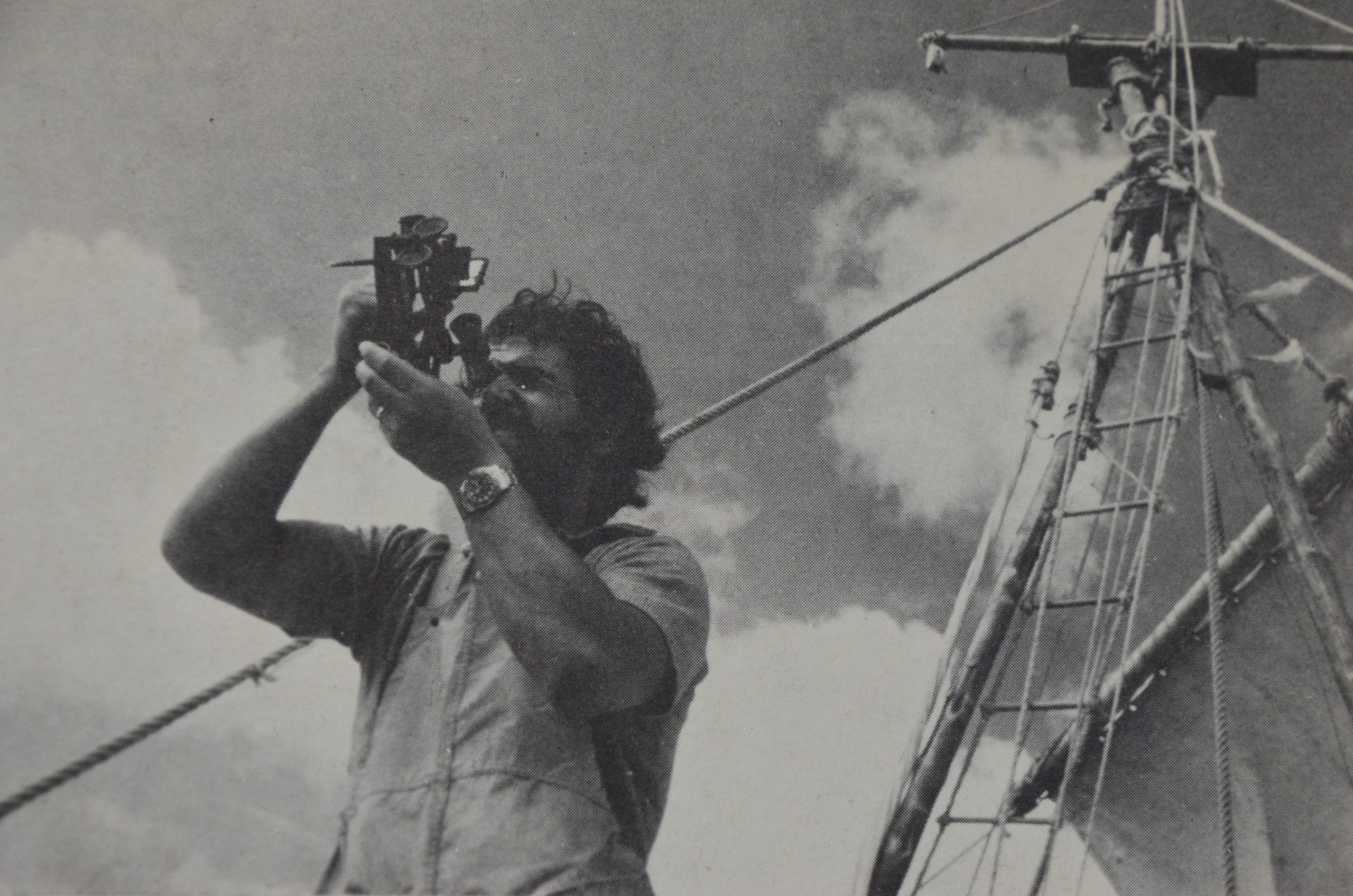We celebrate the 50th anniversary of the arrival of La Balsa to Australia.
50 years since the epic journey that took the Spaniard Vital Alsar commanding a crew of three men, three parrots, and two cats, traveling on top of 7 logs across the Pacific Ocean.
The longest raft voyage in history took six months to be accomplished. They arrived from Ecuador to Australia with no supplies and a broken radio transmitter. They sailed through storms, eat what they fished, and proved to humanity that their sustainably built raft was as capable of crossing the ocean as an ocean liner.
Made out of logs of balsa wood, lianas, and no use of metal elements on their construction, the raft was built as the Huancavilca native Americans,
Thus begins the epic adventure of this universal navigator, who years later he narrated in his book LA BALSA.
Next Thursday, November the 5th, the expedition “La Balsa” will celebrate 50 years since its arrival to the Mooloolaba port on Australia’s oriental coast which set sail from Guayaquil, Ecuador, on May 29th, 1970.
This expedition was considered, at the moment, the longest raft trip ever made, a feat that marked a milestone for navigation history due to the conditions of the crossing of the Pacific Ocean: 8,565 nautical miles (15,862 Km), covered in 161 days, in a boat made out of balsa wood logs, as the culture Manteño-Huancavilca of Ecuadorian coast used to craft.
“La Balsa” was the culmination of an initial expedition named “La Pacífica” in 1966, which castaway after 143 days of navigation when the raft began to lose buoyancy after the wood was attacked by a teredo (shipworm). Regarding this situation, analyzes and studies were carried out that shed light on miscalculations at the time of cutting the logs for the raft. The integrity and tenacity that characterized Vital, among other traits of his personality, let him resume with greater impetus and care the challenge that had been raised and the purposes of such a great event, putting hands to work on the new project from “La Balsa”.
The problems inherent to the navigation conditions, in this long and dangerous trip, not only affected the boat but also, and very importantly, the physical and mental part of the crew, which sometimes pushed it to the limit. Thanks to the effort, enthusiasm, and team spirit, this challenge was successfully overcome, demonstrating human capabilities of survival in castaway conditions.
The success of the expedition put in evidence, once again, the theory about the possibility that the archipelagos and islands of the South Pacific would have been populated by natives coming from the western coasts of South America.
“Faith is the boat, but only the oars of will can carry it” Vital Alsar.
Crew and nationalities of ”La Balsa” (from left to right):
Norman Tetreault, Canada.
Gabriel Salas, Chile.
Vital Alsar, Spain, Captain, and leader of the expedition.
Marc Modena, France.
Through this great achievement of “La Balsa”, which exceeded all the expectations of historians and experts in the field to overcome the adversities of a journey as dangerous as crossing the Pacific Ocean in a primitive raft, a great leap was taken to boost the development of this type of expeditions and research on this exciting field of Anthropology and History.
Regarding Vital’s projects, he would join forces with the group of friends who have given their unconditional support as well as with the future crew members to give life to new expeditions, that they would always carry as a distinctive element a white flag as a symbol and message of Peace, the respect of man towards nature and the promotion of values that foster a better understanding among individuals across generations.
Text: Jorge L. Riveros Miranda (Mexico), Crew member at El Hombre y la Mar expedition in 1978 and Javier Cantera Gomez, crew member at Zamná.
